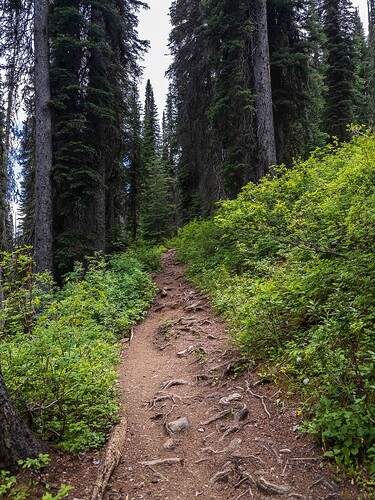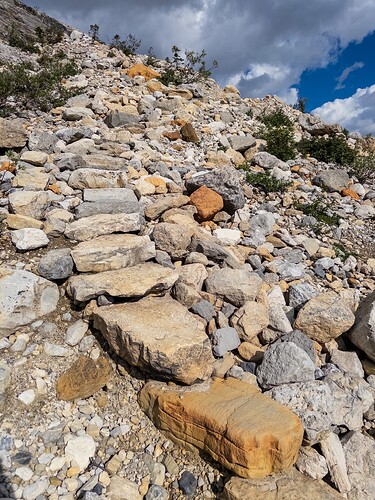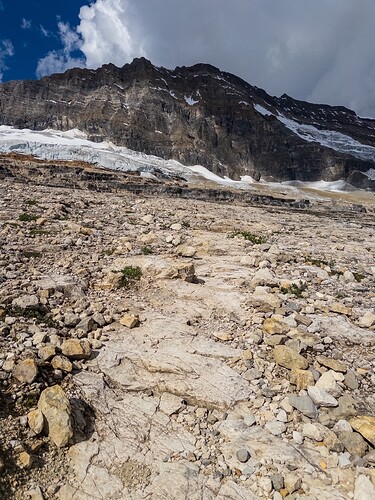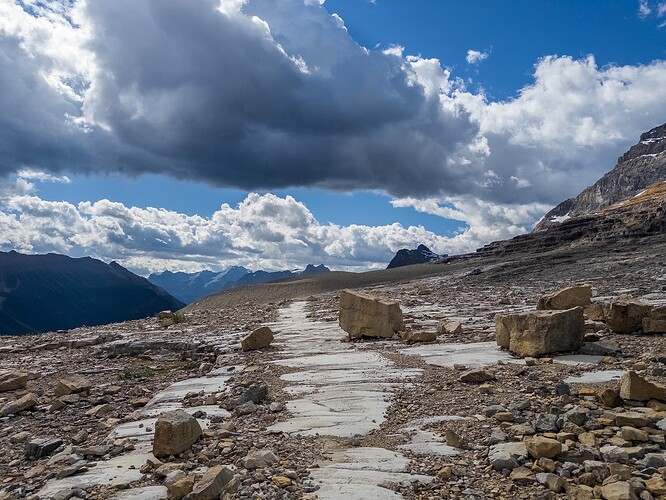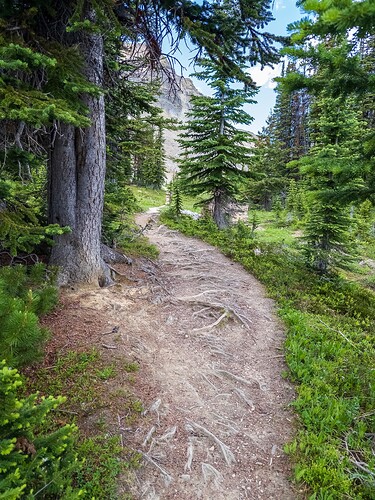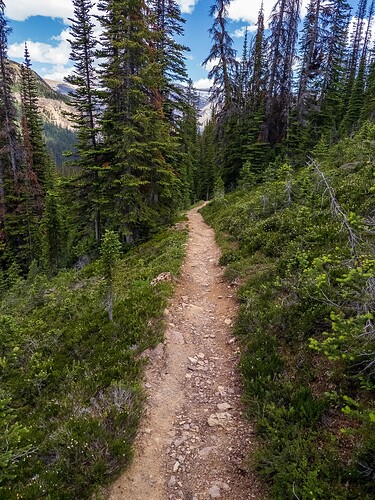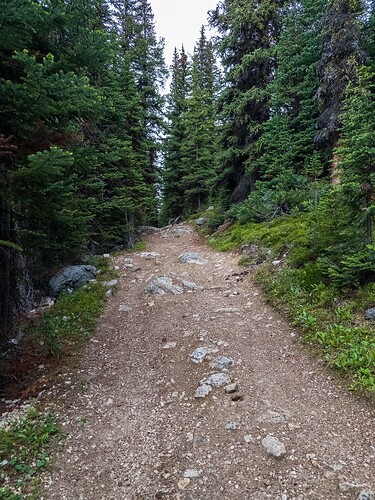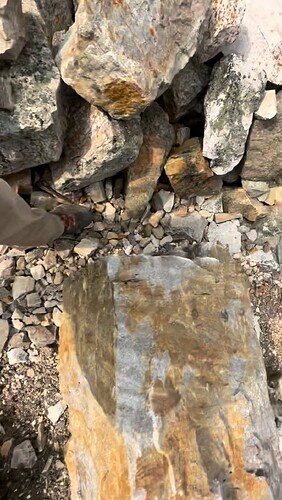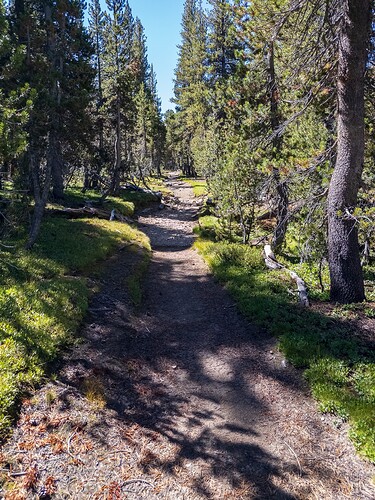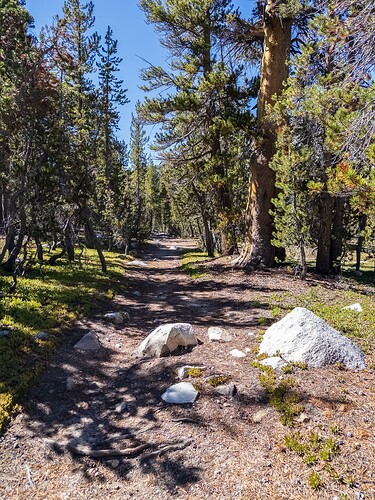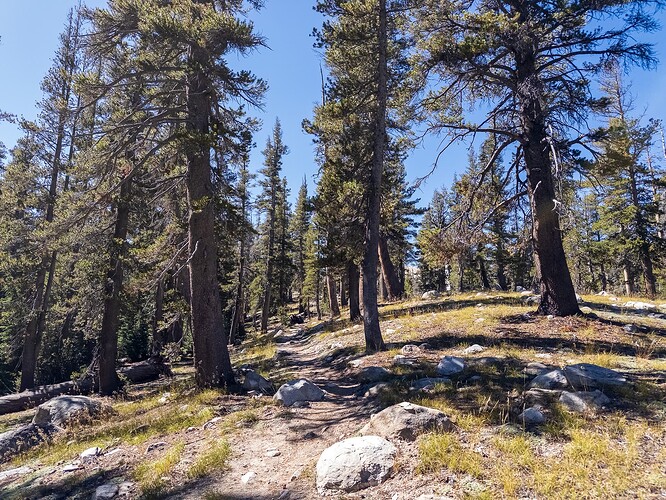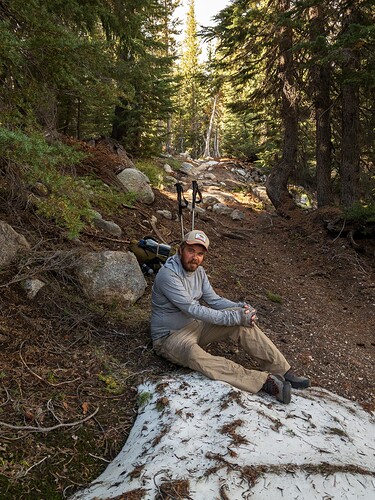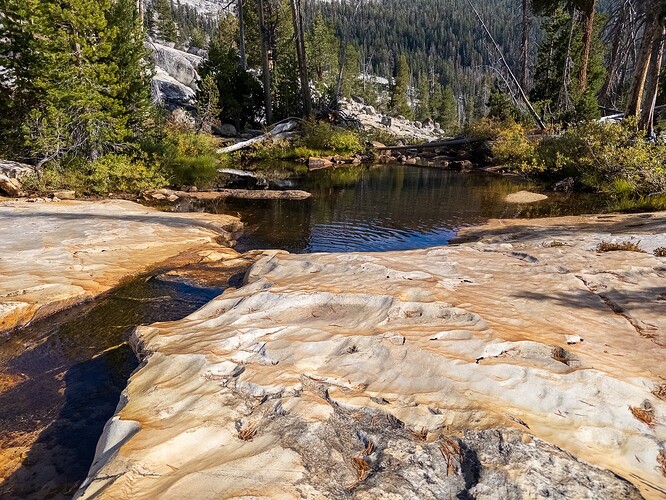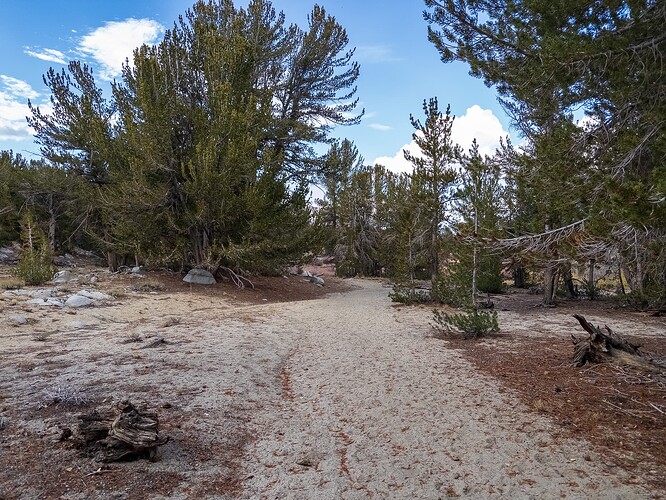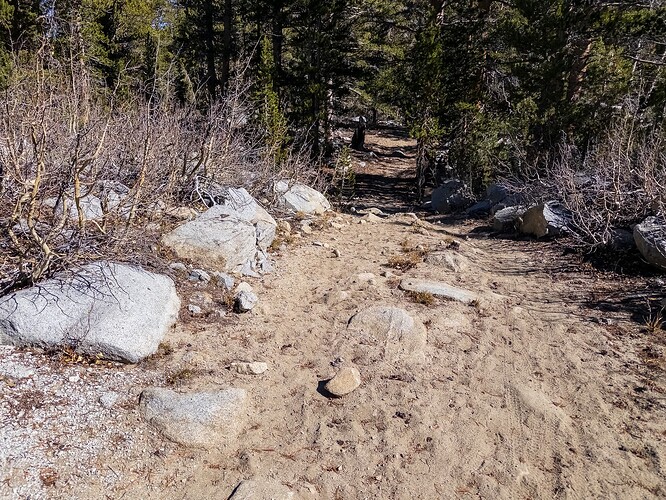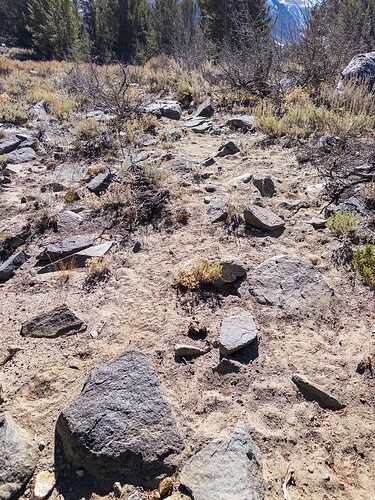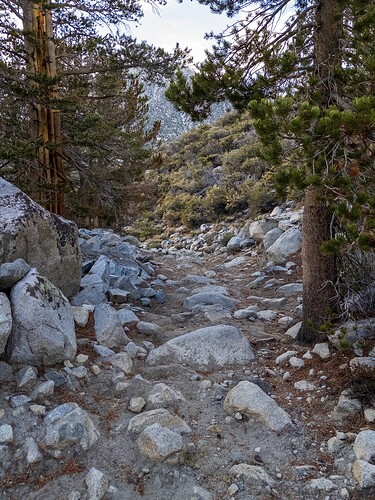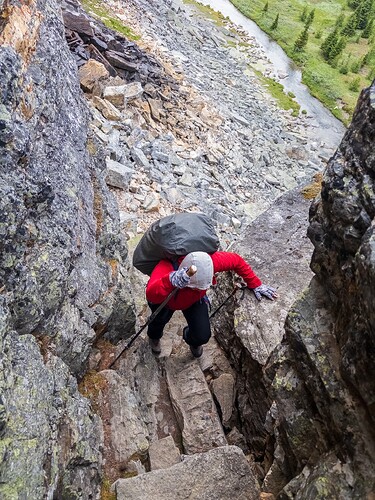There has been a lot of discussion in the spring to early summer about hiking keys. Here’s two conclusions I’ve come to.
Trail variability can make accurate smoothness and surface tagging counterproductive
One issue I see with relying on smoothness and ground is that many trails would need dozens to perhaps hundreds of segments on longer trails, which makes them hard to parse. These photos are all from the “Iceline” trail in Yoho National Park Canada (and are only a small fraction of the variations on it).
In many places there would need to be a new way every 50 meters or less as the smoothness or surface changes (in others it would be hundreds of meters). We could just pick the most uneven surface, or pick a point nearest the trailhead where it changed to simplify things.
This surface=rock is actually one of the simpler bits amusingly.
We saw a few dozen people a day on this trail, a mix of backpackers, trail runners, day hikers etc. Footwear ranged from heavy old school leather boots to athletic sneakers. I was in a middle in a pair of mid top La Sportive TX Hikes I got for 50% off for being used once and returned in the southwest.
Smoothness maxes out at 24cm - it’s pretty common to have some obstacles in the trail at or above that height that don’t pose a significant challenge (around lower shin high). They also could be one 24cm high rock you can easily walk around, or a 24cm high obstacle that covers the entire trail. The former doesn’t mean much to a hiker, but will to a wheelchair user.
Instead of having a hundred or so segments, you could have 2-3 at most. The low end of hiking_technique or sac_scale and surface=gravel for the bit from the trailhead including a smoothness fit for wheelchairs, then take it up a notch in technique and just used surface=ground. Trying to parse out hundreds of variation in surface and smoothness (as some people have suggested tagging every change in the name of accuracy) doesn’t seem all that helpful or likely to be actually parsed by the vast majority of people.
Knowing that the first kilometer or two is hiking_technique=casual-walking and then after that it’s say hiking_technique=surefooted-walking seems like it tells the story well enough.
Amusingly the most “difficult” terrain in this area would be trivial in terms of smoothness and surface (we enountered it on a few social trails). It’s compacted glacial mud with small pebbles in it that shift when moved on, sort of like walking on marbles at any reasonable slope angle. The smoothness is near perfect and the surface would probably just be dirt or ground.
Along the PCT/JMT in Lyell Canyon (a trail that has many thousands of people a summer on it, many just in trail runners or sneakers) there is a lot of borderline T2 terrain due to the trail being “upgraded” for stock back in the 1950s or so or just a lack of willpower or conscious decision to not blast out a nice even T1 path. Most of the upper image has a pretty even path between rocks for someone on foot. The rest of the trail is mostly dirt and duff but will switch to slab or gravel at times.
Also along that stretch of trail in Lyell. Here is a change in surface from a nice dirt single track to (oh no! how scary!) rock. Except it… isn’t. This happens fairly regularly.
Foot (hikers) and wheeled traffic are impacted significantly differently by smoothness
Different perceptions of smoothness will exist for foot and wheeled traffic if we ignore the wiki, editor suggestions, etc and just go by “feel” or “vibes”. This has accessibility implications as smoothness is part of what is used to calculate whether something is wheelchair accessible. It also means that a lot of multi-use paths in either mountainous or just forested terrain that is rocky will have some obstacle at some point which is more than 24cm high and will just be “impassable” if we try to avoid poisoning accessibility by sticking to pure vehicle usage and try to have it be of use to foot traffic.
This path (continuing on from a dirt road for quite a ways before it slims into a more normal single track trail) in Banff National Park would be good for a hiker or mountain biker, intermediate to poor for a road biker, and impassible for someone in a wheelchair.
This section of another trail in Banff would clearly be impassable for wheelchairs and bicycles, but in terms of foot traffic is fair to intermediate at worst.
In the same region a side trail was mostly dirt, but changed to gravel briefly as it crossed a streambed. I don’t think that’s worth tagging. You can see past the streamed more rocks in the trail that would impact smoothness for wheeled users, but be trivial for foot traffic.
Another stretch of trail had smoothness that’d be simple for foot traffic but impact wheeled traversal. Would this be excellent or good as you can walk on a near flat surface the entire time, or impassible because that one rock is more than 24cm high?
A similar example from the JMT nearby
I bruised my calf on a fairly trivial fall from some T3/T4 terrain that wasn’t as grippy as it looked, so was icing it heh. Again this shows variability in smoothness from foreground to background as well it being uneven enough to not be an issue for foot traffic vs most forms of wheeled traffic (this is in a national park and wheeled traffic is not allowed, though horses/stock is, but the general point still stands).
This type of terrain gets discussed in the hiking_technique thread, but isn’t well covered by existing broad tags (SAC) and would be tedious to try and cover with smoothness and surface segments.


